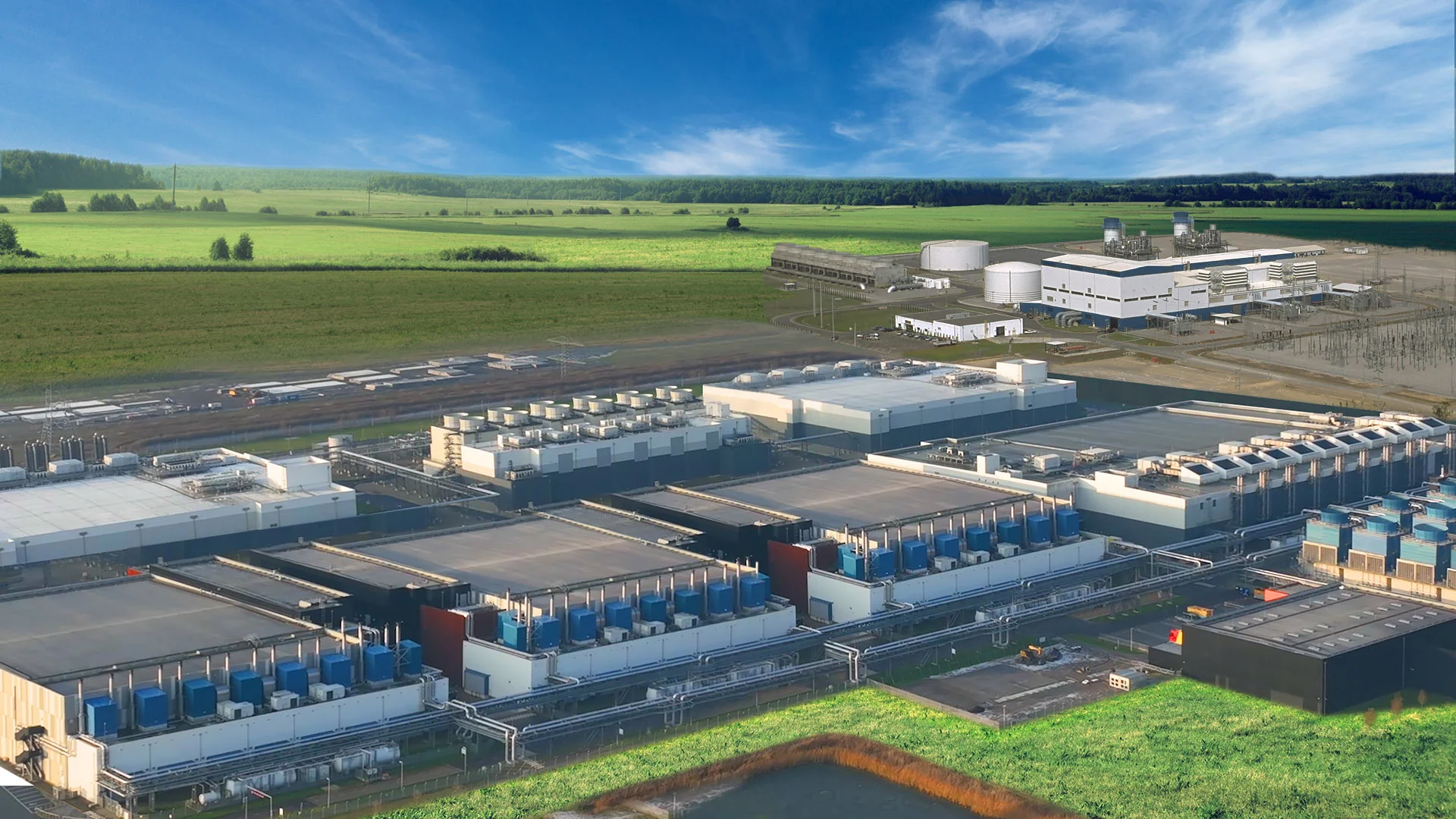Prefer to listen?
Stream our audio version
This audio content was developed with the use of Generative AI.
Due in large part to AI and current high-performance computing demands, data centers are facing new challenges that go well beyond just how much power they need. Cooling is rapidly becoming just as critical as power generation.
More operators are turning to liquid cooling to manage rising heat loads. And GE Vernova’s gas turbines are playing a bigger role in that shift. We provide steady, high-output power options that fit seamlessly into the unique demands of liquid-cooled environments, helping data centers stay cooler, more efficient, and more reliable at scale.
Turning turbine heat into cooling efficiency
Many people know that gas turbines emit exhaust heat energy during operation. That’s typically seen as waste, but in a liquid cooling setup, it can be used to the system’s advantage. When adding a recovery system to capture the heat energy from the exhaust, we plan to use that to feed a direct heat absorption chiller, creating chilled water that can be stored in an insulated tank to cool data centers.
This is notable since the conventional model of relying on grid power is facing challenges in terms of long lines to get a permit to connect to the grid. That’s why many data centers are considering islanded operations with gas turbines to get their power needs in a timely manner and to avoid the wait times that could impact their Time To Revenue (TTR). This allows for a higher efficiency alternative where the data center could rely on the gas turbines not only for power, but also to generate chilled water to serve the data center’s cooling system.
Balancing energy and thermal demands
When a facility’s power demand spikes, its cooling load often climbs with it. GE Vernova’s control systems are aimed to be built with that relationship in mind. Instead of treating thermal and electrical loads separately, the system monitors and balances both in real time.
GE Vernova also aims to supply more comprehensive studies to provide recommendations for stability where the addition of BESS (Battery Energy Storage System) and EMS (Energy Management Systems) could be an alternative to help address the AI compute load fluctuations.This helps improve both system efficiency and stability.
Getting systems to speak the same language
One challenge with liquid cooling infrastructure is how many different systems have to work together—pumps, heat exchangers, chillers, converters, turbines, and more. GE Vernova helps in supporting this integration via controls using protocols and connections that are compatible with other parts of the infrastructure.
This type of integration matters. Whether the data center is grid-connected, islanded, or something in between, having a unified control layer reduces complexity and cuts down on failure points.
Keeping cool under pressure
Reliability is everything in data centers. If cooling has an issue—even briefly—it can trigger real consequences. GE Vernova builds its systems with aims to prioritize uptime. That means incorporating built-in redundancies and automatic switchover capability when needed. This works when using gas turbines as the main power source or as an auxiliary one.
Ready for what’s next
As data centers face increasing demands and the need for lower emissions, infrastructure choices matter more than ever. GE Vernova’s turbine systems help deliver future-focused solutions that enable data centers to build and scale more efficiently and sustainably.
.png)
Ihab Chaaban
Global Commercialization Director, Data Centers, Grid Firming and Hydrogen
Ihab is a global technical and commercial leader with over 30 years of experience in the power generation and systems industry, with deep domain expertise in the energy, utility and electrical power businesses. He has held roles in engineering and commercial leadership across the Middle East, Africa, Europe, and the Americas. In his current role at GE Vernova, he supports data center and grid firming segments, focusing on aero gas turbines, renewables, and energy storage.
Contact us


